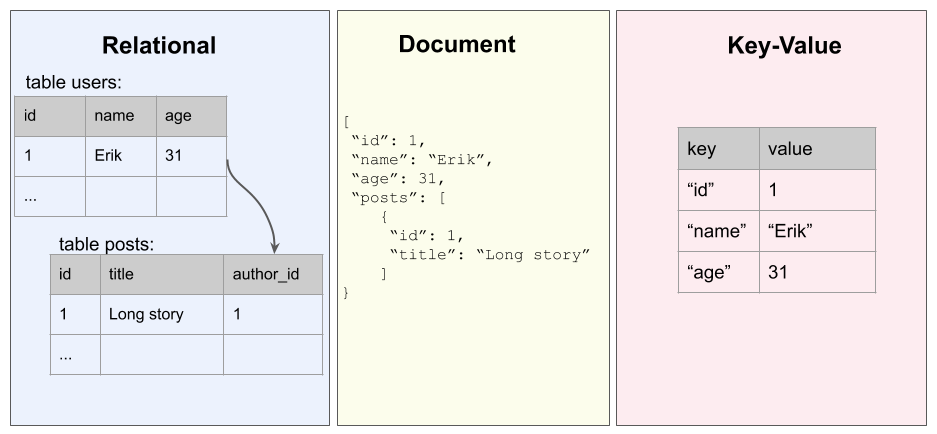Think about water: depending on the end goal, you will not use the same container. If you want to drink, you might use a glass of water but if you want to have a bath, you will probably choose another one. The choice of container will be different in each scenario. The problem is similar for data: without a proper container, there is nothing we can do with it and we need a proper container depending on the situation, which will not only store data but also contribute to solve the problem we have. This data container is the database.
Drawing an exhaustive list of database types on the market is not impossible but would go far beyond the scope of this book. However, I want to give some examples of the most popular ones, so that you can see where graph databases stand in the big picture:
- Relational databases: They are by far the most well known type of database. From SQLite to MySQL or PostgreSQL, they use a common query language, called Structured Query Language (SQL), with some variations among the different implementations. They are well established and allow a clear structure of the data. However, they suffer from performance issues when the data grows and are surprisingly not that good at managing complex relationships, since the relationships require many joins between tables.
- Document-oriented databases: Document-oriented databases, part of the NoSQL (Not Only SQL) era, have gained increasing interest during the last few years. Contrary to relational databases, they can manage flexible data models and are known for better scaling with a large amount of data. Examples of NoSQL databases include MongoDB and Cassandra, but you can find many more on the market.
- Key-value stores: Redis, RocksDB, and Amazon DynamoDB are examples of key-value databases. They are very simple and known to be very fast, but are not well suited to store complex data.
Here is how the different databases can be viewed in a figurative representation:

Graph databases try to bring the best of each world into a single place by being quite simple to use, flexible, and very performant when it comes to relationships.

































































